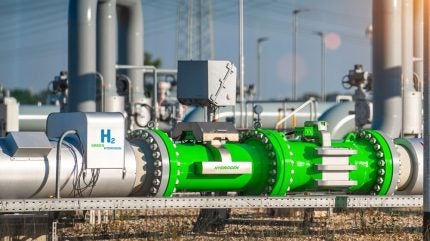
Industry in the US will soon have access to the cheapest green hydrogen in the world, allowing companies to replace polluting coking coal, natural gas and heavy fuel oil with this low-carbon energy at little to no additional cost thanks to the production tax credits in the recently passed Inflation Reduction Act.
This means fertiliser manufacturers, steel manufacturers and shipping companies in the US can take the lead in international commodity markets and make green reindustrialisation a reality. Crucial for US energy security, US industry will be able to count on green hydrogen as a domestically supplied, reliable green fuel source and can ramp up usage to hedge against volatile international markets for coal, oil and natural gas.
Under the new law, producers of green hydrogen made with renewable electricity will receive a $3 credit for each kilogram (kg) of the zero-carbon fuel they can supply for ten years after eligible facilities come online. The production tax credits bring green production of steel, fertilisers and shipping fuel to cost competitiveness with current fossil-based commodity prices.
Ammonia for fertilisers, currently produced with natural gas at around $700 per tonne (/t), can be produced at $500/t with subsidised green hydrogen. Steel, produced today with coal at $590/t, can be produced at $560/t with subsidised green hydrogen. Shipping fuel, produced with ultra-low-sulphur fuel oil at $1,000/t, can be substituted with green hydrogen-derived ammonia produced at a similar cost with the subsidy. In regions with ideal renewable resources, where green hydrogen can be effectively produced at $1/kg with the tax incentives, green commodity costs will fall even further below fossil-based commodity prices.
The additional support of $8bn in federal funding for hydrogen hubs in the Infrastructure Investment and Jobs Act (IIJA) passed last year will spur fundamental infrastructure development connecting industry to new green hydrogen projects. With a mandate from the IIJA, the US Department of Energy is already rolling out support schemes that will activate the complete hydrogen value chain at a regional level.
Green steel and green fertiliser will maintain cost competitiveness even if global fossil fuel markets were to revert to historical low prices. Green shipping fuel might require a premium or additional policy if bunker fuel prices drop below today’s prices. The new tax credits speed up a trend that was already happening and bringing green hydrogen to price parity – namely, the declining cost of the electrolysers used to produce green hydrogen – by giving investors an incentive to invest earlier in this crucial production technology.

US Tariffs are shifting - will you react or anticipate?
Don’t let policy changes catch you off guard. Stay proactive with real-time data and expert analysis.
By GlobalDataGreen hydrogen will play a crucial role in decarbonising fertilisers and steel production as well as shipping – all hard-to-abate sectors with limited options for mitigating their greenhouse gas emissions. Switching to green hydrogen fuels and feedstocks would substantially reduce emissions from these sectors, but high costs and limited availability relative to fossil alternatives have so far prevented industries from transitioning to the clean energy. For example, while fossil-derived grey hydrogen could historically be supplied to industries for as low as $0.7/kg, the base costs of green hydrogen are projected to exceed $3/kg and it is not yet produced at industrial scale across most of the US.
Investors will put money into green hydrogen projects now that the fuel is cost-competitive, creating a positive cycle of increasing availability and cost savings in the short term. Substantial US hydrogen production may come online as soon as in two to five years, and it will continue to grow throughout and beyond the subsidy period. The pace of project development is also accelerating to meet demand for low-carbon fuel in European markets, which are facing the dual pressures of the energy security crisis and the need to meet climate goals in decarbonising industry. This project buildout will decrease fossil fuel demand in several key commodity segments in the medium term and accelerate cost reductions over the next decade.
Green hydrogen market development in the US has traditionally been backed by the private sector. US green hydrogen players risked falling behind companies in China and the EU, where governments are directly subsidising technological investments and infrastructure development to ramp up domestic green hydrogen supply and demand. Now, with passage of the Inflation Reduction Act, and the most ambitious clean hydrogen production subsidy scheme in the world, US companies that deploy green hydrogen will be rewarded if they can rapidly scale up and drive market growth forward.
[Keep up with Energy Monitor: Subscribe to our weekly newsletter]
The new US support for green hydrogen production and use will in turn send strong signals globally that the market is ready to scale. First movers in the US can intensify the pace and volume of their investments with substantially reduced financial risk. This will accelerate technology cost reductions across the green hydrogen value chain, ultimately enabling broader global roll-out of the zero-carbon fuel at lower costs, particularly in developing countries.
At the same time, US industry can lead the way forward on decarbonisation in hard-to-abate sectors, showing how countries can reduce their industrial and transport emissions without sacrificing economic growth. With green hydrogen hubs being set up across the country, additional opportunities for distributing green hydrogen will arise, including opportunities to expand exports at competitive global prices. US companies integrated into hubs would be well-positioned to become leaders in the international green hydrogen trade.



